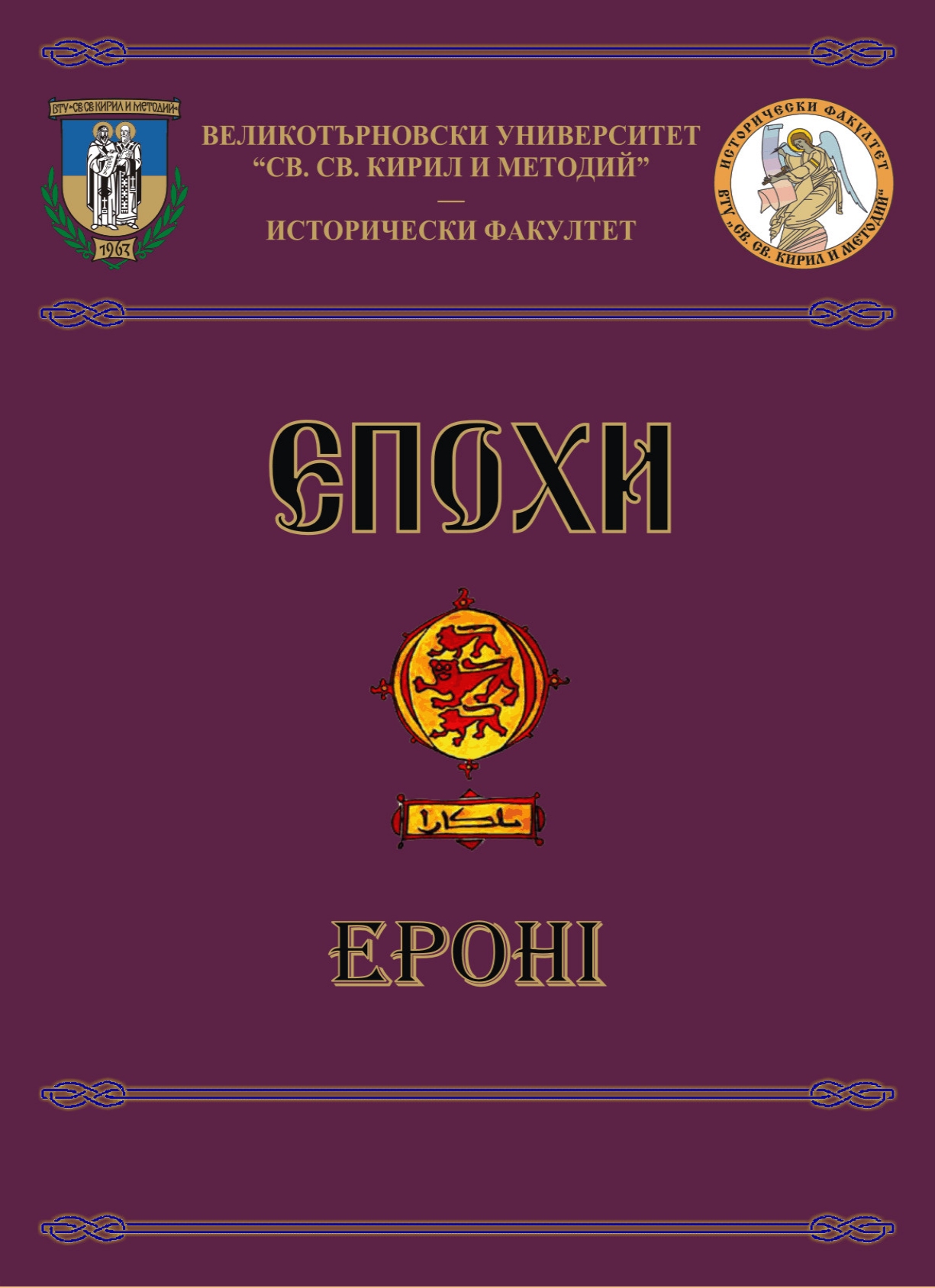
We kindly inform you that, as long as the subject affiliation of our 300.000+ articles is in progress, you might get unsufficient or no results on your third level or second level search. In this case, please broaden your search criteria.

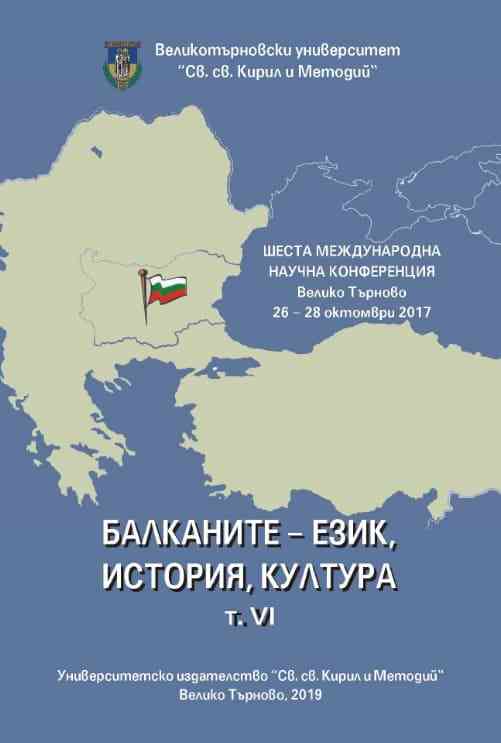
Five European documents of different institutions (1996–2009), describe the transition’s rules in East- and Central Europe after 1989. Nevertheless R Macedonia (1992) continues to exist in the “antifascism-status-quo” shadow; its core is the ideology of Macedonism, i.e. the Serbiancommunist idea that the local population is by Slav-birth and is not a part of the Bulgarian nation. The “antifacism status-quo” is a creation of the Comintern (1919); its Balkans section adopts a resolution (1934) for the “Macedonian nation” invention; in September 1944 it is “built” a “Macedonian language”. So the Comintern internationalism ideology backs the Slav-Serbian position of the non-Bulgarian origin of the native-born population in Vardar Macedonia in practice. The undersigned Anticomintern pact (1936) between Germany and Italie ideologically traces the forthcoming war conflict. During the war (1941–1944) Bulgaria fulfils only administrative governance duties in Vardar Macedonia. At the end of 1944 under the Jugoslav communist party pressure (Comintern party member too!), it is enacted a special law (in a “Democratic Macedonia” – 1945!): the so-called “Macedonian national honour injury” law; the Bulgarians and the Albanians are proclaimed to be “fascist ocuppiers” of Vardar Macedonia.”Radko” is the one of the pseudonims of the last VMRO leader –Ivan Michailov and it is a NGO. It is founded in 2001 in Ohrid. Its aim is “to protect the Bulgarian national identity of the local population”. During 16 years and under the pretence of different judicial causes of Macedonian court at the different levels it is not registrated legally in R Macedonia. After three consecutive appeals by the “Radko” NGO to the European court of human rights in Strasbourg it is registrated finally on 6.October 2016 in R Macedonia.
More...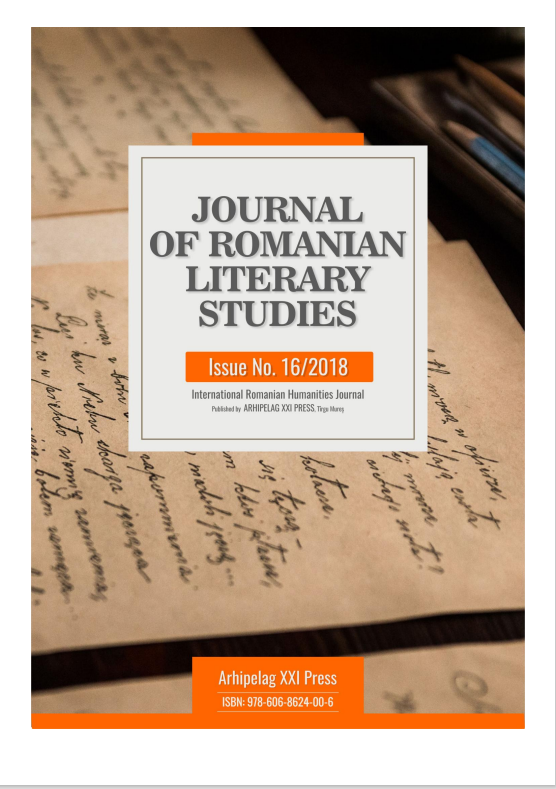
This article focuses on the French novelist’s work Charlotte, a biographical novel/ poem in prose which follows step by step the very short life of the Jewish-German expressionist painter, Charlotte Salomon. Beyond the tragic destiny of the artist this novel condemns once more the most disastrous derailing in human history: the Holocaust. Consequently, this article is meant as a warning against the rising nationalist, racist and anti-Semitic voices in our world.
More...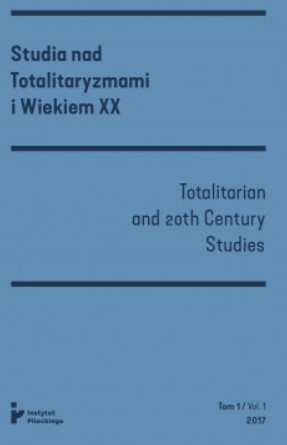
W latach 1939–1940 Hiszpania i Polska znajdowały się na przeciwnych biegunach geograficznych ambicji III Rzeszy. W Niemczech zakończenie w 1939 roku hiszpańskiej wojny domowej zwycięstwem wspieranego przez nazistów reżimu gen. Francisca Franco przyniosło nadzieje na gospodarczą i militarną współpracę przeciwko mocarstwom zachodnim, mimo że ostatecznie Hitler doznał zawodu na obu tych polach. Na Wschodzie Polska była najbardziej konsekwentnym przeciwnikiem niemieckiego ekspansjonizmu dyplomatycznego i militarnego, chociaż alianci zachodni i Związek Sowiecki chętnie układali się z Hitlerem, by uniknąć wojny. Mimo różnic Hiszpania i Polska miały wiele punktów wspólnych, m.in. katolicyzm, rosnące rozczarowanie zachodnimi mocarstwami i głęboką nieufność wobec sowieckiego komunizmu, którą podzielały liczne partie i frakcje, w tym nawet hiszpańscy republikanie, będący cały czas w opozycji do gen. Franco. Artykuł jest poświęcony reakcji hiszpańskich i polskich przywódców na wybuch II wojny światowej, a także podjętym przez nich próbom określenia i umocnienia punktów stycznych między Hiszpanią a Polską – nawet jeśli sympatyzowanie Hiszpanów z Polakami mogło zagrażać relacjom z Niemcami. Do artykułu wykorzystano głównie źródła hiszpańskie.
More...
Celem powstania tego tekstu jest ukazanie obrazu wojny i nowego porządku w Europie prezentowanego w wybranych artykułach ze słowackiej prasy. W momencie wybuchu wojny Słowacja była młodym, autorytarnym państwem, które jeszcze budowało swoją politykę wewnętrzną i zewnętrzną. Wojna stanowiła nowy początek, który mógł zostać odpowiednio wykorzystany przez słowacką propagandę, co też się stało. Słowacja była de facto miejscem relatywnego spokoju w czasach wojennych niepokojów, co również wpływało na możliwości działania propagandy w prasie. Sytuacja względnego spokoju mogła być potwierdzeniem słuszności drogi obranej przez słowackie władze. Artykuł ukazuje także wizerunek Niemców oraz Adolfa Hitlera przedstawiany w słowackiej prasie, rywalizację między nazistowskim a konserwatywnym skrzydłem w łonie Słowackiej Partii Ludowej Hlinki, jak również sam obraz narodowego socjalizmu prezentowany na jej łamach. W charakterze źródeł wykorzystano słowackie gazety („Slovák”, „Slovák Pondelník” i „Gardista”). Doświadczenie wojenne Słowaków jest odmienne niż Polaków i wielu innych europejskich narodów, wobec czego temat ten jest zupełnie wyjątkowy i pozostawia wiele przestrzeni do dalszych badań.
More...
Wbrew temu, czego można by się spodziewać, dotychczas w badaniach historycznych nie poświęcono zbyt wiele uwagi aktywności zagranicznych korespondentów akredytowanych w Berlinie w okresie istnienia III Rzeszy. W centrum zainteresowania znajdowała się „druga strona dziennikarstwa”, czyli relacje państwo–społeczeństwo oraz aparat propagandy nazistowskich Niemiec i jego czołowe postacie, jak np. Joseph Goebbels. Jest to szczególnie zastanawiające, gdyż zagraniczni dziennikarze pracujący w Berlinie w znacznej mierze kształtowali postrzeganie narodowosocjalistycznych Niemiec na arenie międzynarodowej i istotnie przyczynili się do poszerzenia wiedzy o nich na całym świecie. Co więcej, mało kto dziś pamięta, że na początku II wojny światowej amerykańscy reporterzy towarzyszyli jednostkom wszystkich stron konfliktu, ponieważ Stany Zjednoczone pozostawały neutralne aż do grudnia 1941 roku. Artykuł prezentuje czołowych amerykańskich dziennikarzy pracujących w Berlinie – Louisa Lochnera (AP), Williama Shirera (CBS) i Sigrida Schultza („Chicago Tribune”) – którzy przez jakiś czas towarzyszyli oddziałom Wehrmachtu lub mieli możliwość na przełomie 1939 i 1940 roku pojechania do Polski pod nadzorem Niemców. Jak wyglądała ich praca? Co opisywali (a co pomijali) w swoich reportażach? Jaki wpływ ich teksty wywarły na północnoamerykańską i międzynarodową opinię publiczną? Wreszcie, w jakim stopniu wizyty organizowane przez niemieckie ministerstwo propagandy kształtowały ich audycje radiowe i artykuły? W nawiązaniu do mojego odkrycia archiwalnego z 2017 roku, które dotyczyło tajnej współpracy Associated Press z nazistowskimi Niemcami w latach 1942–1945, część artykułu będzie poświęcona amerykańskiemu dziennikarstwu fotograficznemu z lat 1939–1940.
More...
Artykuł zajmuje się represjami niemieckimi wymierzonymi w duchowieństwo Kościoła katolickiego w okupowanej Warszawie w latach 1939–1940. Jego bazą źródłową są zeznania ofiar i świadków nazistowskiego terroru, które po wojnie zgromadziła Główna Komisja Badania Zbrodni Niemieckich w Polsce. Tekst przedstawia różnorodne aspekty stosowanej przemocy, zarówno natury fizycznej, jak i administracyjnej: od ograniczenia swobody kultu religijnego, przez aresztowania, tortury, zsyłki do obozów koncentracyjnych, po egzekucje. Autor próbuje znaleźć odpowiedź na pytanie, co było głównym motywem prześladowań duchowieństwa: wyznawanie wiary katolickiej czy raczej przynależność narodowa. Celem analiz będzie ukazanie niezwykle zawiłych przyczyn represji wobec duchownych, którzy byli zarazem kapłanami, Polakami i członkami elity narodowej. Prześladowania duchowieństwa zostaną zaprezentowane na tle ogólnych represji niemieckich w Warszawie i Generalnym Gubernatorstwie, aby zastanowić się, czy księża stanowili jakiś swoisty przypadek, czy te działania okupanta były częścią szerszych zbrodniczych planów.
More...
In Continental Europe, Spain and Poland were at the geographic extremes of the ambitions of the Third Reich in 1939 and 1940. To Germany, the end of the Spanish Civil War in 1939 with the Nazi-supported victory of the regime of General Francisco Franco brought with it expectations of trade and military collaboration against the Western powers, even if Hitler would later be frustrated in both these areas. In the East, Poland was the most consistent opponent of German diplomatic and military expansionism, even though the Western Allies and the Soviet Union were all eager to make deals with Hitler to avoid war. Despite these differences, Spain and Poland did share a number of common elements, including Catholicism, rising disenchantment with the Western powers, and a deep mistrust of Soviet Communism, the latter belief held across multiple parties and sectors, even including Spanish Republicans opposed to Franco. Using primarily Spanish records, this paper will examine the reaction of Spanish and Polish leaders to the outbreak of the Second World War, and also their attempts at identifying and developing common ground between Spain and Poland – even if for Spain an expression of sympathy for the plight of the Poles could have jeopardized relations with Germany.
More...
The aim of the present article is to take a closer look at the war and the new European order as depicted in selected articles from Slovak press. On the outbreak of the Second World War, Slovakia was a young authoritarian state, which was still in the process of developing its internal and foreign policies. The war was a new beginning, which could be, and indeed was, taken advantage of by Slovak propaganda. Slovakia was effectively a place of relative stability in times of war trouble, which also affected how press propaganda operated. Relative peace could serve to validate the political choices of Slovak authorities. The article also analyzes the depictions of the Germans and Adolf Hitler in Slovak press, the rivalry between the Nazi and conservative wings in the Hlinka’s Slovak People’s Party, as well as the narrative about national socialism as appearing in press articles. My sources are selected Slovak papers (“Slovák”, “Slovák Pondelník”, and “Gardista”). The Slovaks experienced the war in different fashion than the Poles and many other European nations did, which makes this subject unique and means that it lends itself to extensive further study.
More...
Contrary to what could be expected, relatively little attention has been given in historical research to the actions of foreign correspondents accredited in Berlin during the Third Reich. The focus has been on “the other side of journalism,” that is on the relations between the state and the people, as well as on Nazi Germany’s propaganda apparatus and its leading figures, such as Joseph Goebbels. This is particularly thought-provoking, as the foreign journalists working in Berlin made a major contribution to shaping the international perception of Nazi Germany and increasing global awareness of its nature and actions. What is more, it is largely forgotten these days that at the beginning of the Second World War, American reporters followed military units of all belligerents, since the United States was a neutral country up until December 1941. The article presents the top American journalists working in Berlin – Louis Lochner (AP), William Shirer (CBS) and Otto Tolischus (“New York Times”) – who for some time accompanied Wehrmacht units or had the opportunity of coming to Poland towards the end of 1939 or at the beginning of 1940, under German supervision. What did their work look like? What did they include in (and omit from) their reports? What impact did their texts have on the North American and international public? Finally, to what extent were their radio broadcasts and articles shaped by the trips arranged for them by the German Ministry of Propaganda? In the context of my 2017 archival discovery concerning the secret co-operation between the Associated Press and Nazi Germany in the years 1942–1945, part of the article will be devoted to American photographic journalism of 1939–1940.
More...
The present article concerns German repressions against the clergy of the Catholic Church in occupied Warsaw in the years 1939–1940. Its source base is formed from the testimonies of victims and witnesses of Nazi terror, collected after the war by the Main Commission for the Investigation of German Crimes in Poland. The text presents a variety of aspects relative to the violence, both physical and administrative, employed by the occupying forces, including restriction of religious freedoms, arrest, torture, transport to concentration camps, and execution. The author strives to identify whether the central motive for the persecution of the clergy was based on adherence to the Catholic faith or rather on nationality. The intention herein is to present the extremely complicated reasons for the repressions against the clergy, who were at once priests, Poles, and members of the national elite. The persecution of the clergy is presented in the more general context of German repressions in Warsaw and the General Government in order to facilitate consideration whether the clergy were a special case, or whether the occupier’s actions were part of a broader criminal plan.
More...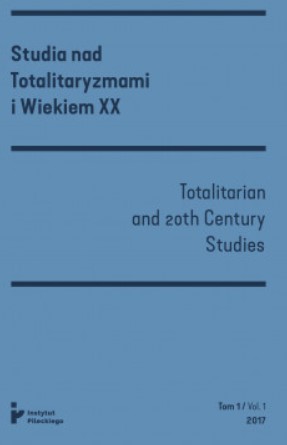
From the very beginning of the invasion of Poland in September 1939, the Germans conducted mass murders of Polish civilians in the entire country, however their scale differed in individual of the occupied regions. The greatest crimes were perpetrated in the pre-war Pomeranian Voivodeship, where approx. 30,000 people were murdered. The German terror did not assume such proportions in any other region of annexed Poland. These atrocities targeted mainly the Polish intelligentsia, but also farmers and workers. A thousand patients of psychiatric hospitals and hundreds of Pomeranian Jews were executed and buried in the same death pits. Apart from the Einsatzgruppen units, members of the German minority – the activists of the Selbstschutz Westpreussen – also played a special role in this crime. They were particularly exposed to and receptive of the Nazi ideology due to the German propaganda concerning the so-called Pomeranian corridor and the Bloody Sunday in Bydgoszcz. The planned extermination campaign, which Rafał Lemkin believed to be the first physical genocide of the war, was portrayed as an act of self-defense and retaliation for the death of the Volksdeutschers. In order to emphasize the importance of the events that unfolded in Gdańsk Pomerania in 1939 as the onset of the genocidal German occupation policy, a new historical concept was introduced: “the Pomeranian crime of 1939.”
More...
During an address to the House of Commons on 31 March 1939, Arthur Neville Chamberlain, the British Prime Minister, gave a guarantee to Poland. Today, there is no doubt that the United Kingdom guaranteed only the independence of the Polish Republic and not its territorial integrity, thereby enabling the possibility of a peaceful settlement of the German-Polish dispute over Gdańsk and the so-called Danzig Corridor. This guarantee was a turning point in relations between Warsaw and London, leading to direct political co-operation between both states in the months leading up to the outbreak of the Second World War.
More...
Niemcy od momentu wkroczenia do Polski we wrześniu 1939 roku dokonywali masowych mordów na polskiej ludności cywilnej w całym kraju, lecz ich skala w poszczególnych regionach okupowanej Polski była różna. Do największych zbrodni doszło na terenie przedwojennego województwa pomorskiego, gdzie zamordowano ok. 30 tys. osób. W żadnym innym regionie zaanektowanej Polski terror niemiecki nie był aż tak wielki. Zbrodni dokonywano przede wszystkim na polskiej inteligencji, ale także na rolnikach i robotnikach. W tych samych dołach śmierci pogrzebano tysiąc rozstrzelanych pacjentów szpitali psychiatrycznych i setki pomorskich Żydów. Szczególną rolę w tej zbrodni, obok jednostek Einsatzgruppen, odgrywali członkowie mniejszości niemieckiej – aktywiści Selbstschutzu Westpreussen. Byli oni szczególnie podatni na ideologię nazistowską ze względu na intensywność propagandy dotyczącej tzw. korytarza pomorskiego i bydgoskiej „krwawej niedzieli”. Zaplanowaną akcję eksterminacyjną, która w rozumieniu Rafała Lemkina była pierwszym w czasie wojny ludobójstwem fizycznym, przedstawiano jako akt samoobrony i zemstę za śmierć volksdeutschów. W celu podkreślenia znaczenia wydarzeń na Pomorzu Gdańskim w 1939 roku jako początku niemieckiej ludobójczej polityki okupacyjnej utworzono nowe pojęcie historyczne – „zbrodnia pomorska 1939”.
More...
Brytyjski premier Arthur Neville Chamberlain 31 marca 1939 roku podczas wystąpienia w Izbie Gmin udzielił Polsce deklaracji gwarancyjnej. Nie ulega już dzisiaj wątpliwości, że Zjednoczone Królestwo nie gwarantowało integralności terytorialnej Rzeczypospolitej, lecz wyłącznie jej niepodległość – co otwierało drogę do pokojowego rozwiązania niemiecko-polskiego sporu o Gdańsk i tzw. korytarz. Deklaracja gwarancyjna przyniosła przełom w stosunkach na linii Warszawa–Londyn, doprowadzając do bezpośredniej politycznej współpracy między obu państwami na kilka miesięcy przed wybuchem II wojny światowej.
More...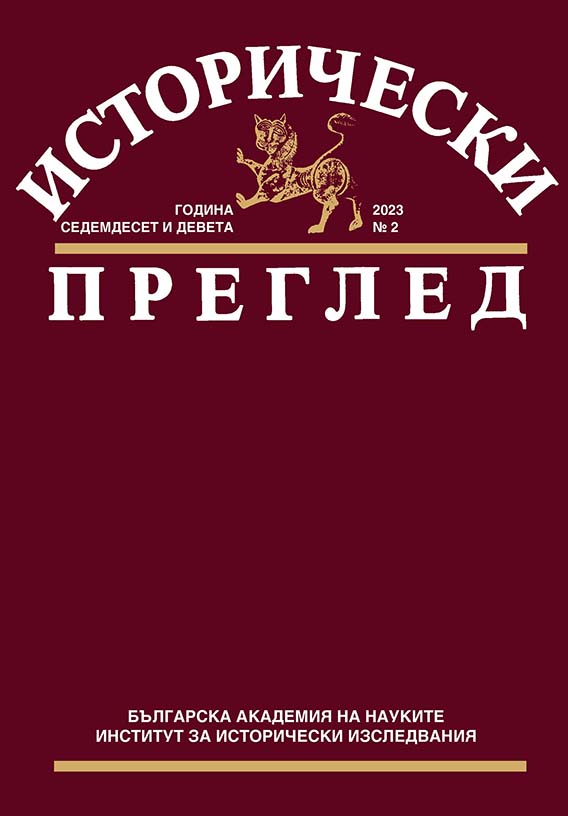
The Soviet military presence in Bulgaria after 9 September 1944 and the establishment of the new government are the subject of contradictory historical interpretations. The anti-German measures introduced at the end of World War II including the internment of citizens of Germany and its satellites, and the labor mobilization of ethnic Germans in the USSR represent a fragment of the Bulgarian past that was only brought to the public attention after the fall of socialism. While the political use of this past has led to the indirect inclusion of the anti-German measures in the list of crimes of communism condemned by Europe, scholarly analysis reveals a complex process transcending the context of the local political regime. The study of this little-known fragment of Bulgarian history brings forth the question of the distinction between the principle of nationality and that of citizenship in a Balkan country confronted with the Soviet suspicion of the German population in securing territorial control. The growing importance of national memory for the emerging European (historical) consciousness provokes reflection on the role of a historian in defining this ambiguous past influencing the present. The European construction of supranational historical memory presupposes the supranationalization of related national historiographies. The article places the history of the German population in Eastern Europe at the end of the Second World War and the political use of this past in an expanded context, drawing on primary Bulgarian and Soviet sources, on historical scholarly works, and on research studying the construction of historical memory.
More...
Givi Margvelashvili is a victim of two dictatorships, Nazism and Communism, he is a double emigrant, his multifaceted work is created on the border of two cultures, two different worldviews. He started writing at the age of 30, when after leaving the Saxenhausen concentration camp, he found himself in a completely foreign environment, in his historical homeland, and his aunt's family was connected to the old life with only German. "From the past, only language was selected for him, language was a living part of a deprived life, which no one could take away except time. At the same time, his memory and talent faced unprecedented resistance ”(Margvelashvili 2018: 216). On the one hand, the work on German-language literature, and on the other hand, the literary disagreement that Margvelashvili showed against the current regime, increasingly formed the basis for saying that "language and theme choose the writer" (emphasis added Naira Gelashvili) and not vice versa. "Captain Vakushi" is a text created in the early period of Givi Margvelashvili's work, it is autobiographical and is a genre of historical novel. The object of our attention this time is the first volume of this work. The writer tells us about the period, how Western culture digs into a number of peculiarities of Nazi existence and what is the current reality seen through the eyes of an immigrant. Obviously, Margvelashvili's style of play is preserved in this text as well, and the author often conveys the message grotesquely, with a kind of cynicism and allegory, with metaphorical charges. The excursion of the novel is led by a teenager Givi Margvelashvili, the principle of historicism is preserved, the facts are found for a real basis, the facts are conveyed ironically and the face of totalitarian regimes is identified by metaphorical subtexts.
More...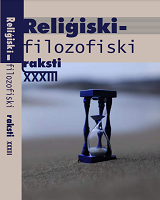
The article explores the memories of exile Latvians by analysing the role of material values in the process of their displacement from Latvia in 1944/1945, as well as the manifestations of moral values revealed in the narratives of the actions, choices and decisions of refugees. The study is based on life story interviews gathered in the National Oral History Archive which convey the displacement experience in an intense way by vividly depicting the psychological and emotional circumstances and also the material issues that people faced in the particular historical situation. The sources confirmed that refugees tried to think practically and take only the most necessary things with them, but quite often it turned out that they were not prepared for how far and long their refugee journey would turn out to be. Moreover, it turned out that memories of material items taken along by the refugees were often directly related to the symbolic value that these objects acquired over time. The sources also identified common values relevant to the refugees (nature and life, solidarity, justice, responsibility, goodness, and freedom) which were revealed both in the way how exile Latvians reflected on their own and other people’s actions and in the episodes chosen to be included in their life story.
More...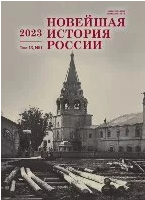
A high level of anti-semitism in the newly revived Polish state had to be taken into account by the Soviet diplomacy in the first half of the 1920s. The disclosed documents from the correspondence between the Plenipotentiary representative of the USSR in Warsaw with the central office of the People’s Commissariat of Foreign Affairs introduced into the scholarship for the first time testify to the existence of a Jewish problem in Polish-Soviet relations. Moscow had to keep track of the number of Jews in the diplomatic mission in Warsaw as well as to consider the request of Polish officials, including the Polish leader Jozef Pilsudski, about the desirability of appointing a person of Russian origin the head of the mission in Warsaw given the level of anti-semitism in the Polish society. The deputies of the Polish Sejm at a meeting of the Foreign Affairs Committee attributed the shortcomings in the Polish-Soviet negotiations to the Jewish nationality of the representative of the USSR. Another problem in Polish-Soviet relations in 1923 was represented by the destiny of Jews who escaped through Poland from Soviet Russia and Soviet Ukraine to the United States. After the introduction of immigration quotas in the USA in 1921 about 6 to 8 thousand Jews were not able to receive entry visas in the United States in 1923. The Polish government required their urgent deportation. Other countries did not want to see them on their territory either. The Jewish organization “Joint” was forced to ask Moscow to approve of their repatriation to the USSR on condition it took charge of covering all expenses. After some hesitation, the USSR agreed with such repatriation. However, it was not organized in a civilized way. The Polish authorities simply ordered to drive Jews to the borders with the USSR. It meant the spontaneous transfer across the border which caused a new scandal in the already strained Polish-Soviet relations.
More...
The history of humor is not new to the Russian historiography. At the same time, over the last decade, the research into laughter has been in demand and relevant, especially within the study of the history of emotions. The author suggests a specific example of the study of laughter in the local context. The article examines laughter during the period of the Great Patriotic War based on the newspaper “Magnitogorskii rabochii” in two ways. The first layer is made up of “guest” humorous sketches presented by the works of “TASS Windows” and front-line newspapers. The second — feuilletons, cartoons, humoresques posted on the pages of the city newspaper. Their authors were local journalists and artists. Local authors are understood as those who resided in the city during the Great Patriotic War. The former basically broadcast images of front-line life, explained military events, consoled people demonstrating shortcomings of the enemy and the dignity of the Soviet army. The latter, during the most difficult moments on the fronts, shifted the attention of residents to pressing urban problems, largely typical of Magnitogorsk: officials, roads, baths, etc. The article pays special attention to the influence of front-line events on laughter practices, forms of humor, themes and functions performed by it. The latter underwent significant changes during the war years. If at the beginning of the war, laughter performed an explanatory and anesthetic function helping the townspeople to cope with the difficult time of incomprehension of the events, of mobilization, of the first losses, etc., then in 1942 the substitution function became key: front-line humor was replaced by local humor. The end of the war required humor to make an effort to revive positive moods in the city, to ensure a gradual return to a peaceful existence.
More...